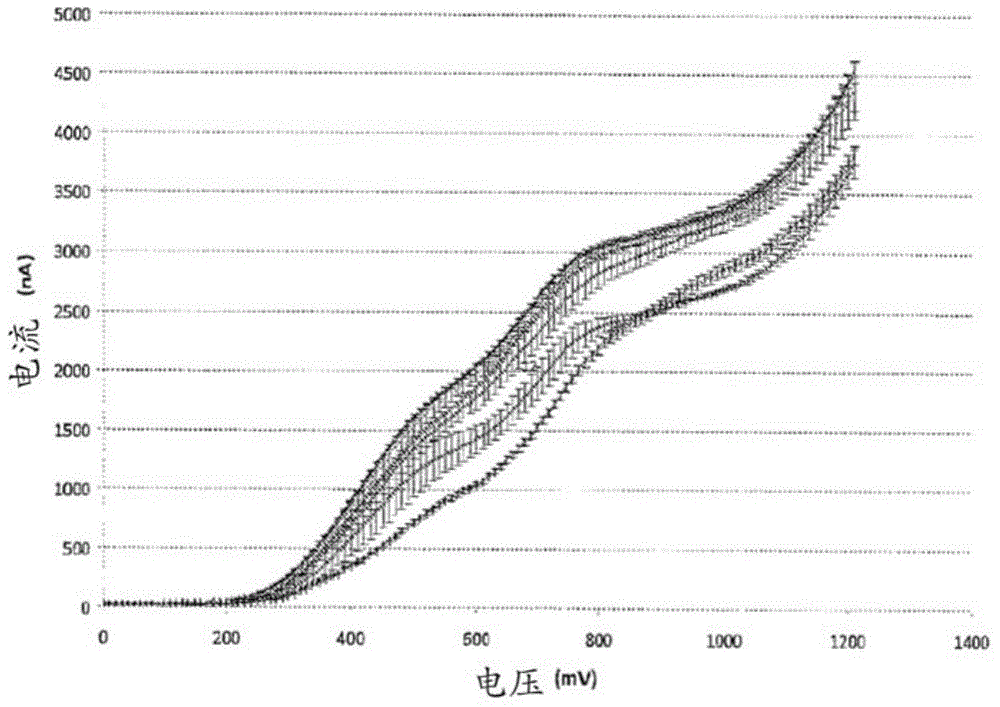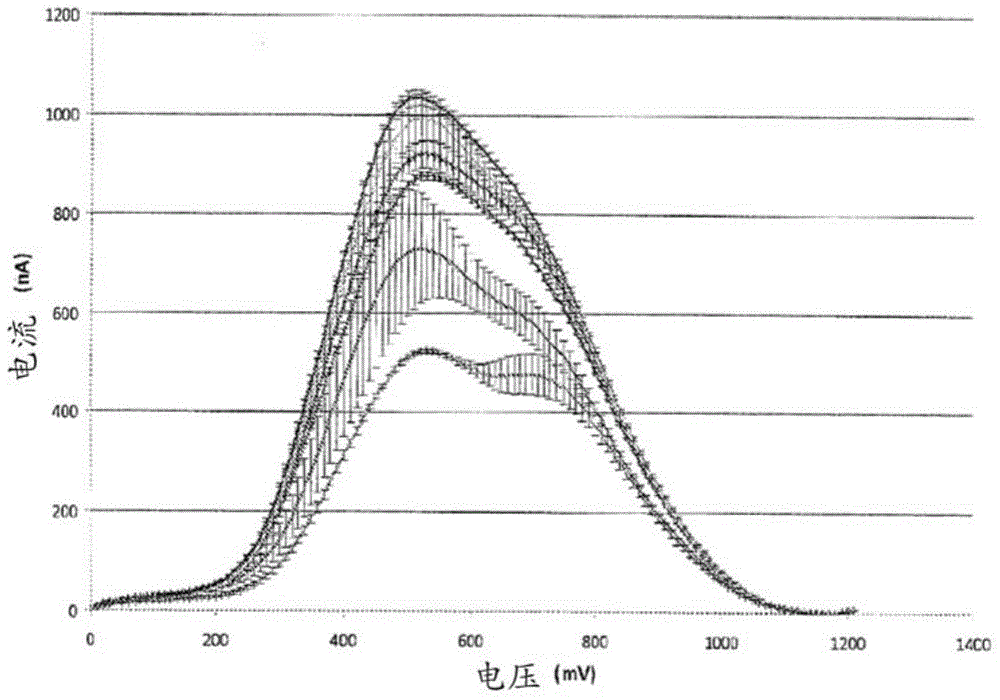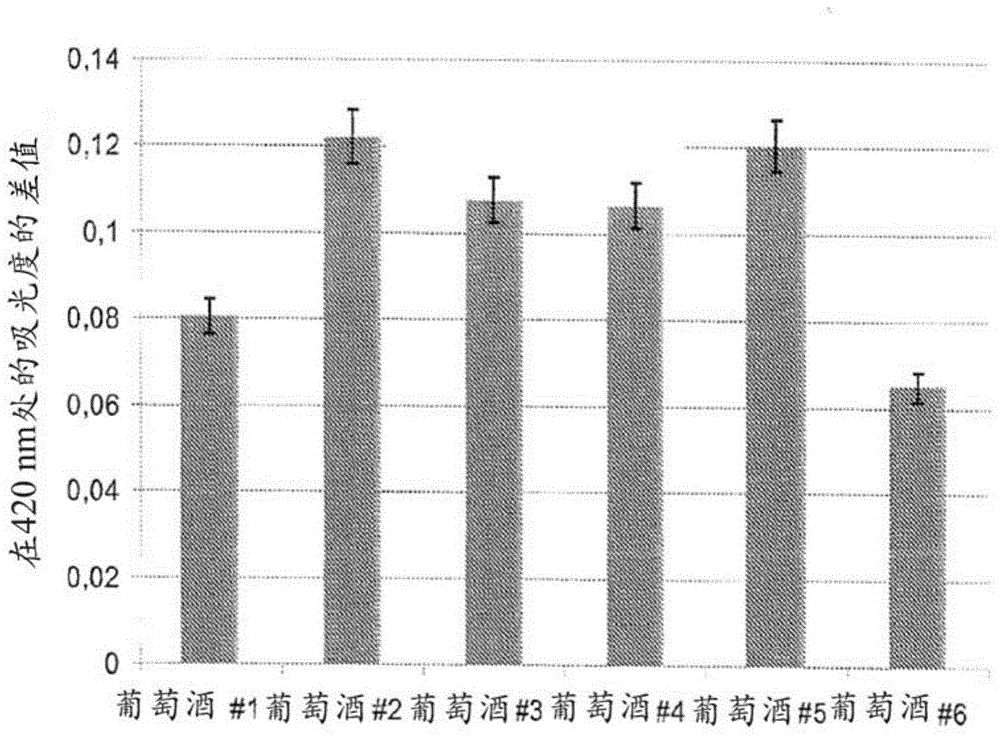Electroanalytical methods for predicting the oxidability of a wine or a grape must and related systems
A technique for wine, grape juice, markers of oxidizability, electroanalysis of oxidizability, selection of the best closure for storing wine or grape juice in a container, prediction of oxidizability of wine or grape juice Oxidative field, able to solve problems such as complication
- Summary
- Abstract
- Description
- Claims
- Application Information
AI Technical Summary
Problems solved by technology
Method used
Image
Examples
example 1
[0156]Example 1: Analysis of a set of six wines by cyclic voltammetry. The wines are six different white wines produced in 2010 from Grenache blanc grapes harvested in the Languedoc-Roussillon region (France). Voltammograms were recorded using an Edelscan device (EDEL Therapeutics, Switzerland) equipped with disposable multi-surface electrode strips.
[0157] Replace single-use electrode strips with new ones between scans, and discard used electrode strips. It takes less than 15 seconds to change electrode strips between scans. Scans were recorded over a voltage range from 0 to 1200 mV, and each scan took 30 seconds.
[0158] Then go to the figure 1 The device also calculated the processed voltammogram obtained by digital pseudotitration of the primary voltammogram according to the mathematical operation described in WO 2006 / 094529 A1. These processed voltammograms are depicted in figure 2 , and appears as an approximate bell-shaped curve. The electrochemical profiles o...
example 2
[0162] Example 2: To experimentally determine the oxidizability of each of the wines analyzed by voltammetry in Example 1, an accelerated aging test simulating wine aging was performed.
[0163] For the accelerated aging test, 10 mL of each wine was placed in a 40 ml bottle and left open to react with air at 25 degrees Celsius for 14 days. The oxidizability of each sample was then determined by the difference between the absorbance at 420 nm before and after the accelerated aging test. All experiments were performed in triplicate. Absorbance at 420 nm is an indicator of wine browning, one of the main changes induced by oxidation.
[0164] The results of the accelerated aging test are given in Table 2 below, and in image 3 is depicted as a bar graph. The six wines showed different oxidizability values, with samples 1 and 6 showing relatively low oxidizability.
[0165] Table 2
[0166] wine sample number
example 3
[0167] Example 3: The AOP values listed in Table 1 (see Example 1) were compared to the experimentally determined wine oxidizability values listed in Table 2 (see Example 2 and image 3 ) for drawing. Perform linear regression analysis to determine R 2 value. The resulting correlation plot is depicted in Figure 4 middle.
[0168] A very high correlation was observed (R 2 = 0.982), indicating that electrochemical data, and especially processed voltammograms and AOP values, have great potential to predict wine oxidizability.
PUM
 Login to View More
Login to View More Abstract
Description
Claims
Application Information
 Login to View More
Login to View More - R&D
- Intellectual Property
- Life Sciences
- Materials
- Tech Scout
- Unparalleled Data Quality
- Higher Quality Content
- 60% Fewer Hallucinations
Browse by: Latest US Patents, China's latest patents, Technical Efficacy Thesaurus, Application Domain, Technology Topic, Popular Technical Reports.
© 2025 PatSnap. All rights reserved.Legal|Privacy policy|Modern Slavery Act Transparency Statement|Sitemap|About US| Contact US: help@patsnap.com



